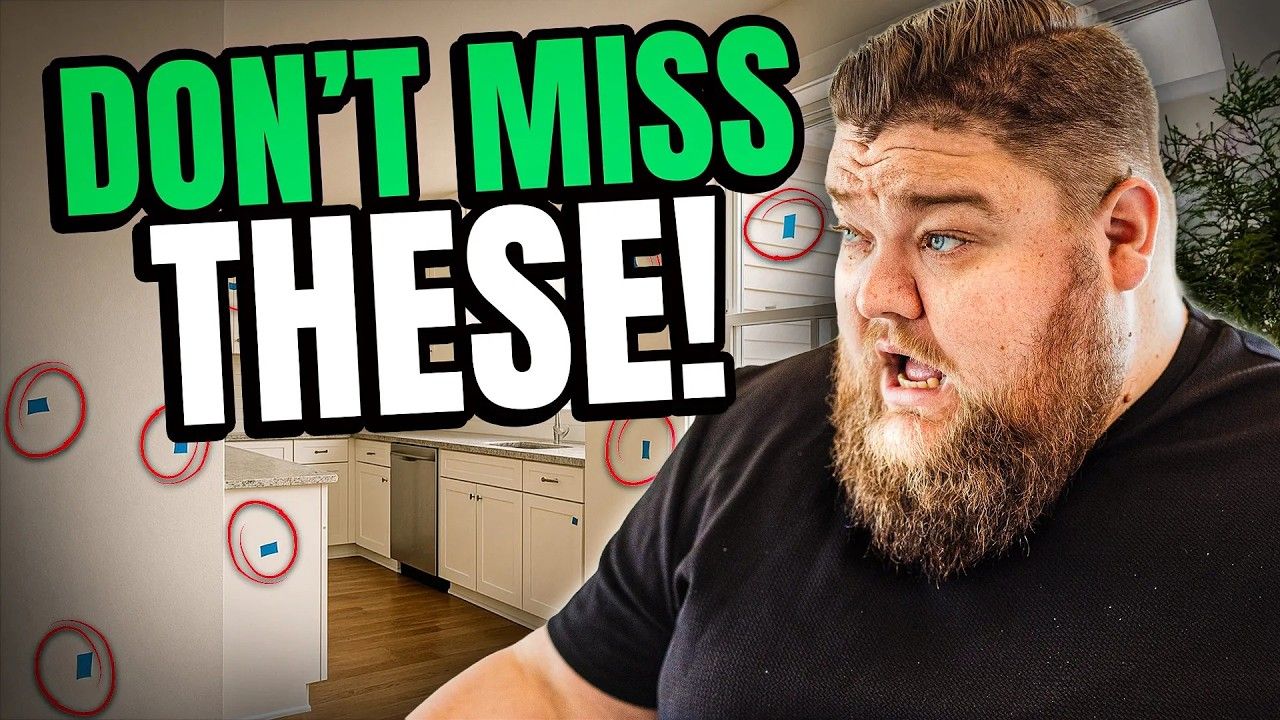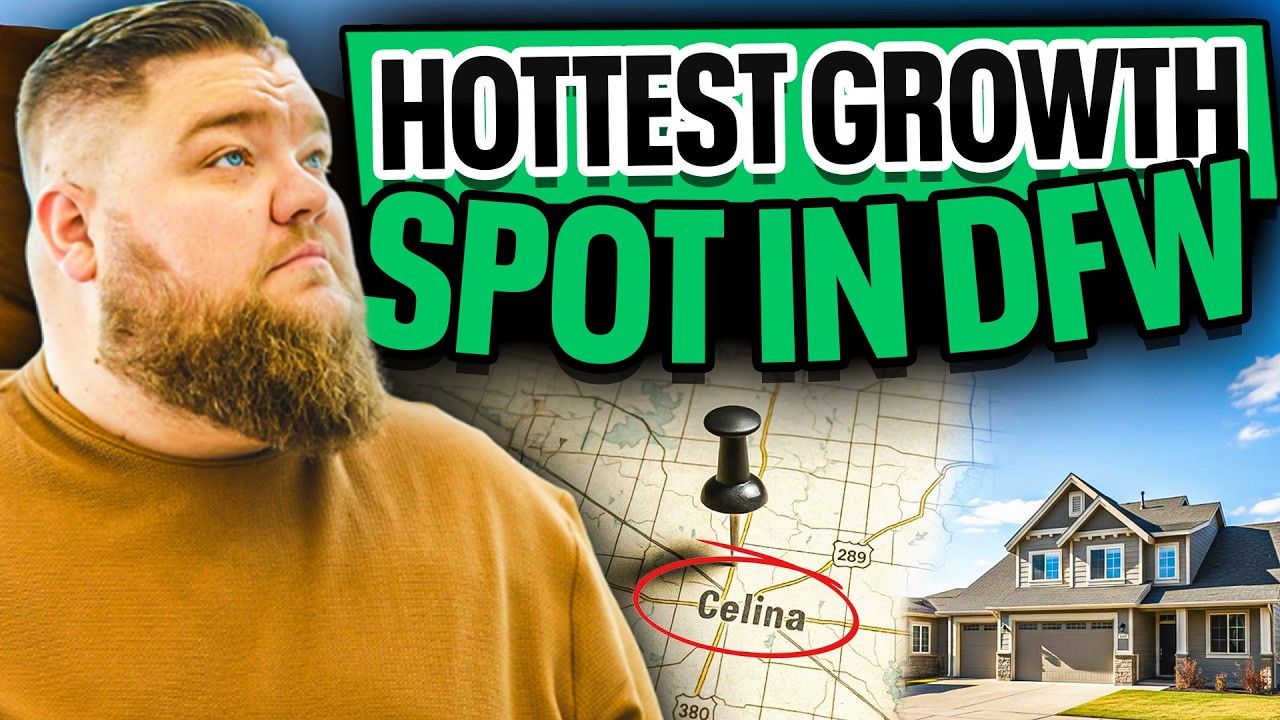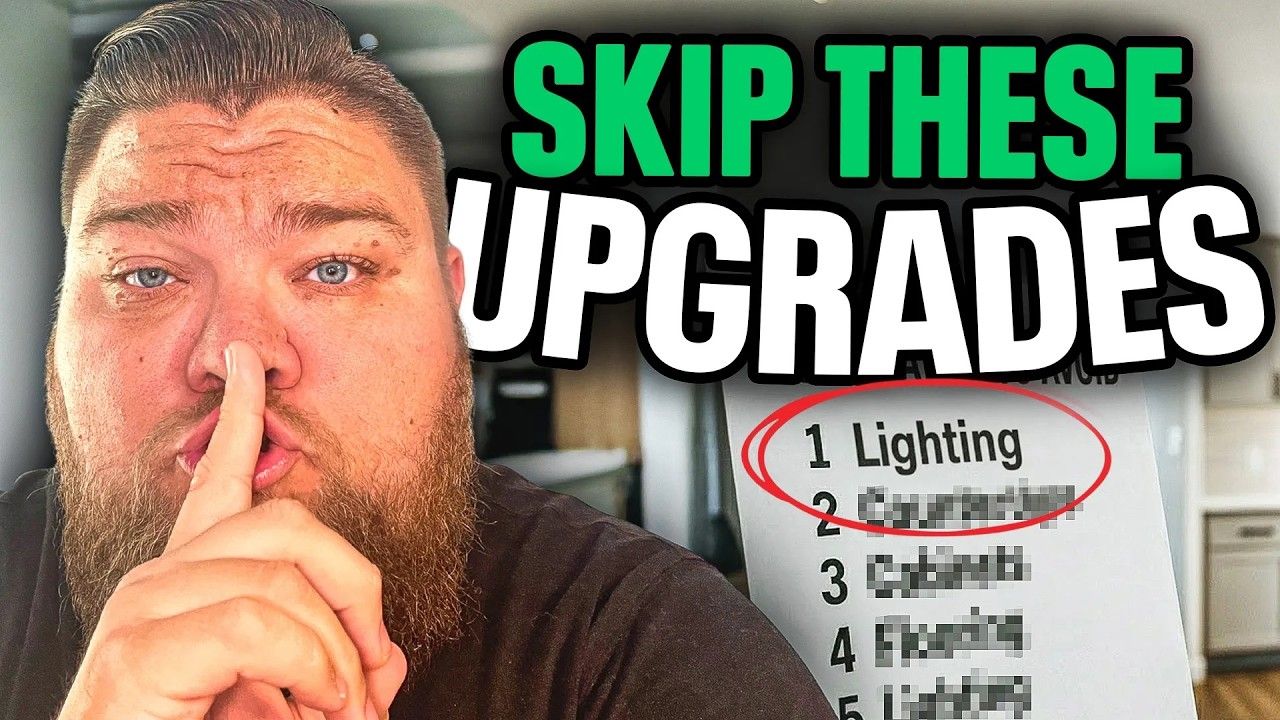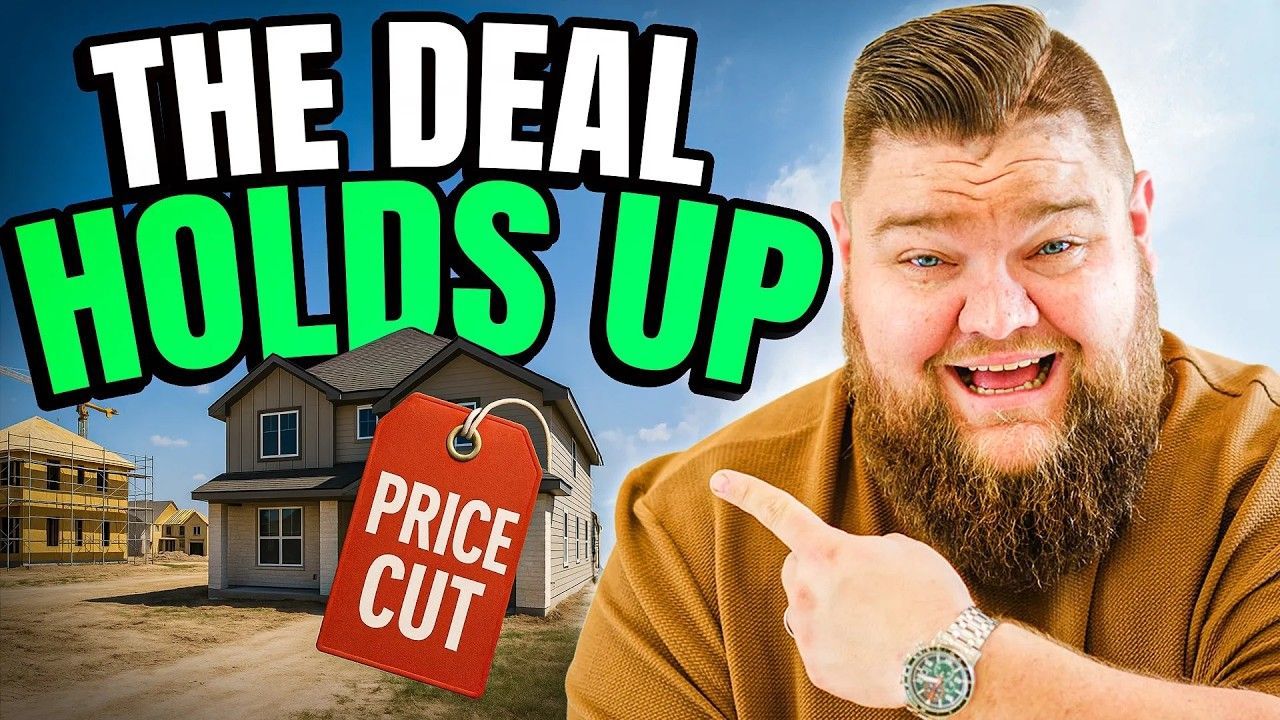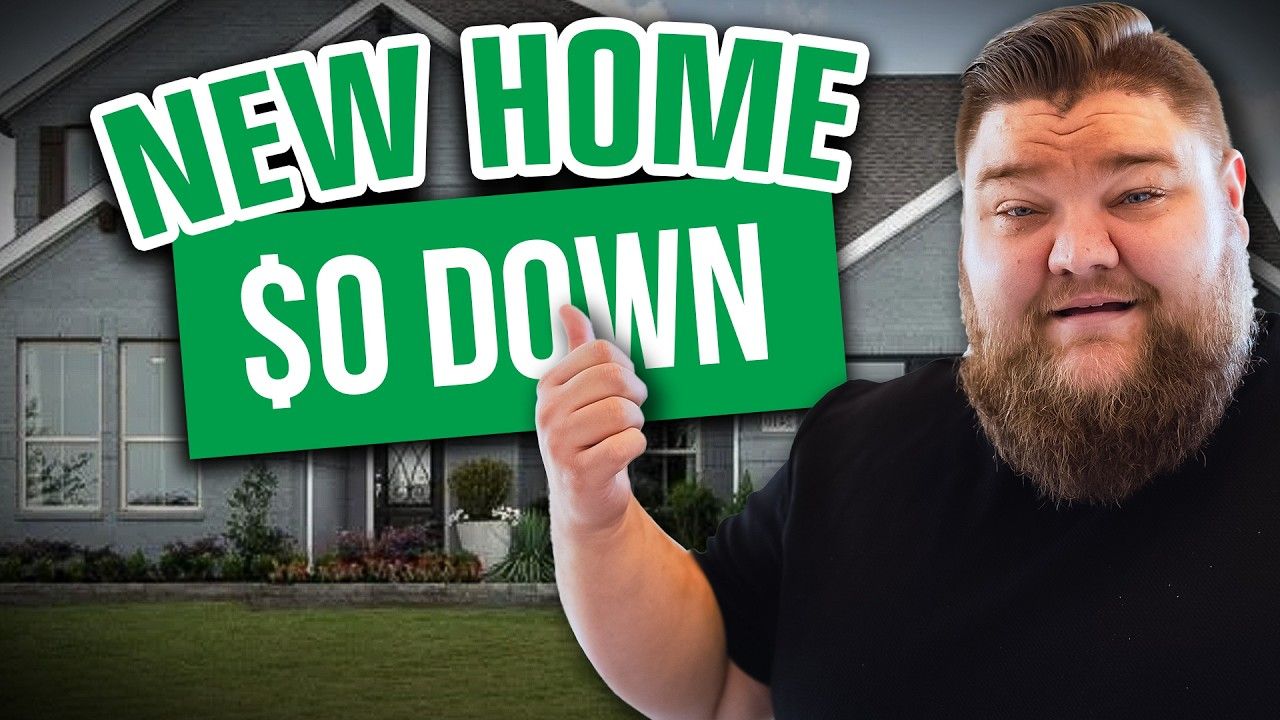The Truth About 50-Year Mortgages (and the Smarter Way to Save)
50-year mortgage DFW headlines are everywhere, promising lower monthly payments and improved affordability. The idea is seductive: stretch a mortgage to 50 years and your monthly payment drops, right? But when you run the math, the total interest often balloons into an eye-popping amount. I want to cut through the noise and show a better, actionable strategy using builder incentives that many buyers are already taking advantage of in Dallas–Fort Worth.
Table of Contents
- Why a 50-Year Mortgage DFW Sounds Appealing — and Why It Can Be Dangerous
- 50-Year Mortgage DFW Math: Real Numbers That Expose the Tradeoff
- A Smarter Alternative to a 50-Year Mortgage DFW: Builder-Funded Rate Buydowns
- DFW Builder Incentive Examples and What They Mean for Your Payment
- How DFW Builder Buydowns Work: Practical Breakdowns
- 50-Year Mortgage DFW vs. Builder Buydowns: Side-By-Side Comparison
- DFW House-Hunting Checklist: Using Builder Incentives Instead of a 50-Year Mortgage
- Final Takeaway
- FAQs
Why a 50-Year Mortgage DFW Sounds Appealing — and Why It Can Be Dangerous
Stretching a mortgage term from 30 to 50 years logically reduces your monthly principal and interest payment. For buyers feeling squeezed by current rates, a lower monthly number feels like relief. That short-term drop is the marketing hook behind many conversations about a 50-year mortgage DFW option.
Here is the catch: the lower payment comes at the expense of decades more interest. You pay far longer, and interest compounds. That means a relatively small monthly savings can translate into hundreds of thousands of additional dollars in interest over the life of the loan. When you compare alternatives, that tradeoff often makes the 50-year option a poor long-term financial move.
50-Year Mortgage DFW Math: Real Numbers That Expose the Tradeoff
Let’s look at a straightforward example so the math is clear. Imagine a $400,000 home, FHA financing, 3.5% down, and a market rate around 6.15%. On a traditional 30-year note, the all-in payment (taxes, insurance, mortgage insurance) can land near $3,500 per month. That sounds steep, but the total interest paid over the life of the loan at that rate ends up around $468,634 — a lifetime cost that pushes total payments toward about $861,389.
Now extend that same loan to 50 years, leaving the rate otherwise the same. Monthly payment drops, sure — by a few hundred dollars. But interest paid over 50 years jumps dramatically. In an example like this one, interest climbs to roughly $873,000, meaning total payments exceed $1.26 million. That is more than double the interest from the 30-year version.
That difference shows why the 50-year mortgage DFW pitch needs a hard look. The monthly relief is real, but the lifetime cost is enormous. Few borrowers truly keep a mortgage for 50 years without refinancing or selling earlier. If you plan to refinance in a few years, a 50-year note could be used tactically — but it should not be the default assumption for long-term financial planning.
A Smarter Alternative to a 50-Year Mortgage DFW: Builder-Funded Rate Buydowns
Instead of banking on a long-term change to national policy or accepting decades of extra interest, many buyers in DFW are getting creative with builder incentives. Builders are motivated to sell inventory quickly and move product, so they are offering real money toward rate buydowns, permanent points, or covering closing costs.
These offers are not a scam. They are negotiation tools builders use to make monthly payments dial into an affordable range while keeping the loan conventional in term and avoiding the interest explosion that comes with 50 years. In short, you get the monthly relief of a lower effective rate without committing to a dramatically longer amortization.
Common incentive structures you’ll see
- Fixed reduced interest — builder advertises a lower fixed rate for inventory homes (4.99% is common in examples).
- 2-1 or 3-2-1 buydowns — the builder funds a temporary lower rate for year one and year two, then the rate steps up to your permanent rate.
- Permanent buydown (discount points) — builder pays points to lower your long-term rate permanently.
- Closing cost credits — builder pays closing costs so buyers keep more cash at closing and can afford a larger down payment.
DFW Builder Incentive Examples and What They Mean for Your Payment
Builders around Dallas–Fort Worth are using several tactics right now. One example is an advertised fixed rate at 4.99% on inventory homes. On a $399,000 inventory home with similar taxes and insurance assumptions, moving from a market 6.15% scenario to a 4.99% builder rate can reduce lifetime interest by roughly $100,000 compared to stretching to a 50-year note.
On higher price points, the difference becomes even more pronounced. Using a $750,000 example, a 50-year mortgage DFW scenario might shave a few hundred dollars per month compared with a 30-year loan at a higher rate, but the total interest over 50 years can exceed $1.5 million. By contrast, using a builder buydown to secure a lower fixed rate or a staged buydown often yields far superior long-term savings.
Inventory homes vs build-to-order
Most advertised builder incentives apply to inventory homes — units that are ready to close in 45 to 60 days. Inventory gives the builder immediate liquidity and allows them to apply rate incentives to close quickly. If you want to use incentives, you will often need to pick an inventory home rather than wait months for new construction.
How DFW Builder Buydowns Work: Practical Breakdowns
Different buydowns give different monthly relief and long-term consequences. Here are the typical structures:
2-1 buydown
Year 1: rate is reduced by 2 percentage points. Year 2: reduced by 1 percentage point. Year 3 onward: permanent rate. Builders often fund the temporary reductions so the buyer enjoys lower payments while getting settled, increasing chances they can refinance or grow income before rates step up.
3-2-1 buydown (or similar)
Acts like a staged relief that levels up each year until it reaches the permanent rate. Some builders advertise a 3-2-1 structure or a 1-2-3 style where the first year is extremely low (for example, 1.99%), then steps upward until it normalizes.
Permanent buydown (discount points)
Every point usually costs about 1% of the loan amount and lowers your rate roughly one-quarter of a percent per point. Builders may pay discount points to permanently reduce your rate. In the example used earlier, buying five points on a $525,000 purchase with 5% down could cost the builder nearly $25,000 and lower a monthly principal and interest payment by roughly $392. Over five years, that is significant cumulative savings and a break-even point useful for planning.
50-Year Mortgage DFW vs. Builder Buydowns: Side-By-Side Comparison
Key differences to consider:
- Monthly payment: 50-year gives immediate reduction; staged buydowns and permanent points also reduce payments but with less lifetime interest cost.
- Total interest: 50-year typically multiplies lifetime interest by a very large margin. Permanent buydowns reduce lifetime interest.
- Flexibility: Builder buydowns are often tied to inventory closings and can be combined with closing cost credits. A 50-year note may be baked into mortgage product availability rather than negotiable extras.
- Refinancing risk: Many buyers planning to refinance within a few years might use a 50-year product tactically, but that is speculative; buydowns improve payments without creating this long-term burden.
Given those contrasts, the more reliable path for most buyers in DFW is to pursue builder incentives on inventory homes or negotiated permanent buydowns instead of taking on the extra decades of interest that come with a 50-year mortgage DFW option.
DFW House-Hunting Checklist: Using Builder Incentives Instead of a 50-Year Mortgage
- Focus on inventory homes if you want builder incentives that are already applied on listings.
- Ask builders specifically whether incentives are available as a permanent buydown (points), a staged buydown (2-1 or 3-2-1), or closing cost credits.
- Run the numbers: ask for a side-by-side amortization showing your 30-year payment, a 50-year payment, and the buydown scenarios. Compare total interest and break-evens.
- Negotiate: builder incentives can be added to price reductions, closing credits, or paid points. Prioritize what matches your cash flow and long-term plans.
- Think in timeframes: if you plan to live in the home 3 to 7 years, temporary buydowns and credits often win. If you plan to stay decades, permanent rate reductions matter most.
Final Takeaway
For Dallas–Fort Worth buyers, the 50-year mortgage DFW conversation deserves attention, but it is not a silver bullet for affordability. The monthly relief is real, but so is the long-term interest cost. Many builders in DFW are already funding buydowns or offering attractive fixed-rate incentives on inventory homes. Those options often deliver similar monthly relief without the staggering lifetime interest of a 50-year amortization.
If affordability is the goal, the smarter pivot is to look for builder-funded buydowns, permanent points paid by the builder, or closing cost credits on inventory homes. These solutions produce meaningful monthly savings while preserving your long-term equity and minimizing interest paid.
If you need help buying a home or want me to run numbers and find the best builder incentives for you, call or text me at 469-707-9077.
VIEW BEST DEALS IN DFW FOR NEW CONSTRUCTION HOMES
FAQs
What is a 2-1 buydown and how does it affect my payment?
A 2-1 buydown temporarily reduces your interest rate by 2 percentage points in year one and 1 percentage point in year two, then returns to the permanent rate in year three. It lowers early payments so you can get settled or build savings. Builders often fund these temporary reductions, which decreases your monthly cash flow early without affecting the loan term.
Is a 50-year mortgage DFW ever a good idea?
It can be useful tactically if you expect to refinance in a short window or need temporary monthly relief with a plan to sell or refinance. For most people, the long-term interest cost makes it an inferior choice compared with options that lower the rate without elongating the amortization.
How does a permanent buydown work and who pays for it?
A permanent buydown involves paying discount points to lower the loan's interest rate for the life of the mortgage. Each point typically costs 1% of the loan amount and reduces your rate roughly one-quarter of a percent per point. Builders may pay points as an incentive, effectively lowering your long-term interest costs at no out-of-pocket expense to you.
Do builder incentives apply to every new home?
Most incentives apply to inventory homes that the builder wants to sell quickly. Offers vary by community, builder, and available inventory. Always confirm the incentive's terms and whether it applies to a specific lot or model.
Should I take closing cost credits or a rate buydown?
If you need to lower your cash-to-close, closing cost credits are ideal. If you prefer lower monthly payments and long-term savings, a permanent buydown might be better. Temporary buydowns help if you need short-term relief. Your decision depends on cash availability and how long you plan to stay in the home.
How do I compare a 50-year mortgage DFW option to a builder buydown?
Run side-by-side amortization schedules showing monthly payment, total interest, and total payments over typical time horizons (5, 10, 30 years). Compare the lifetime interest and your cash flow needs. Builder buydowns frequently offer a much better long-term position while matching near-term affordability.
READ MORE: DFW Builders Dropped Their 2026 Predictions and Buyers Aren’t Ready
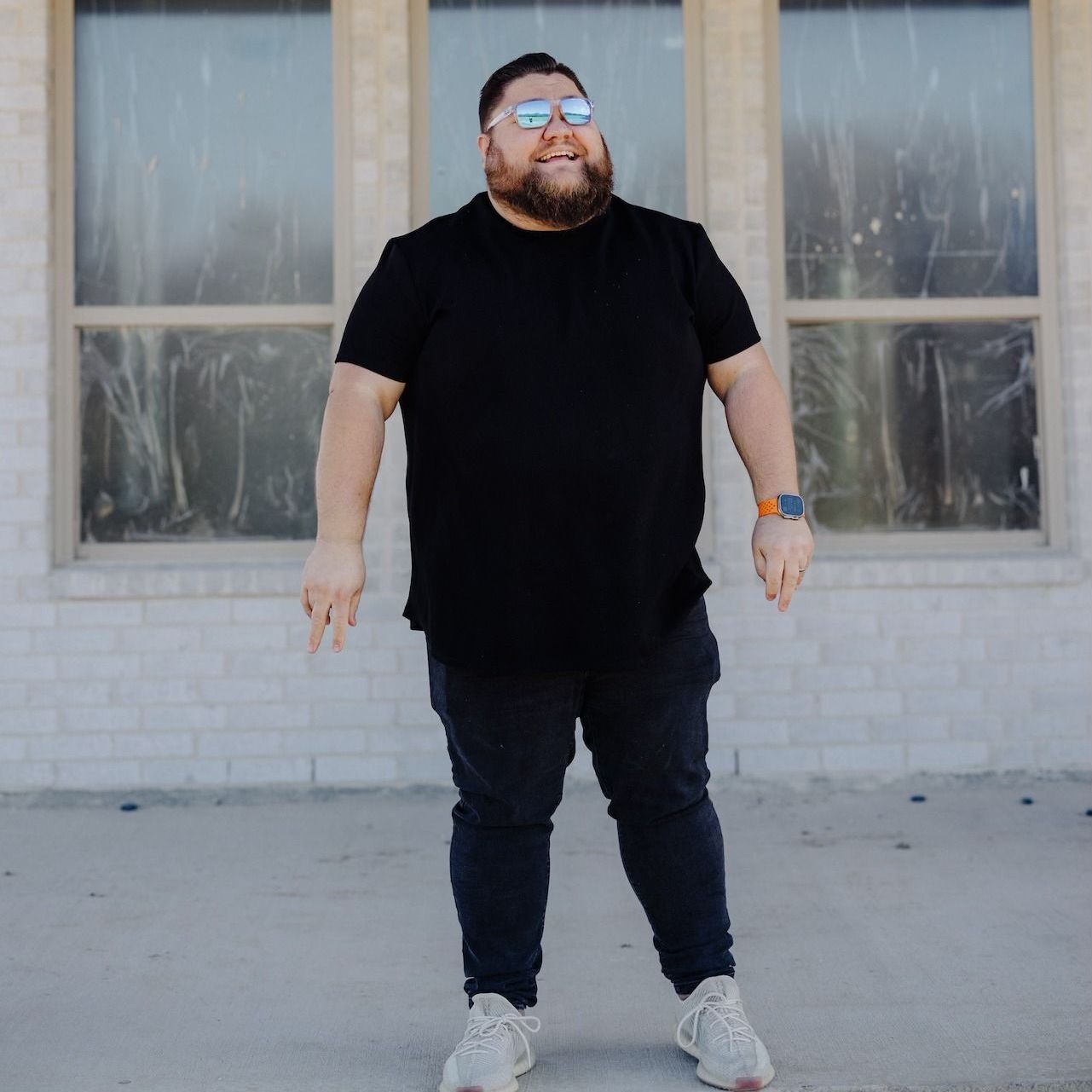
Zak Schmidt
From in-depth property tours and builder reviews to practical how-to guides and community insights, I make navigating the real estate process easy and enjoyable.





